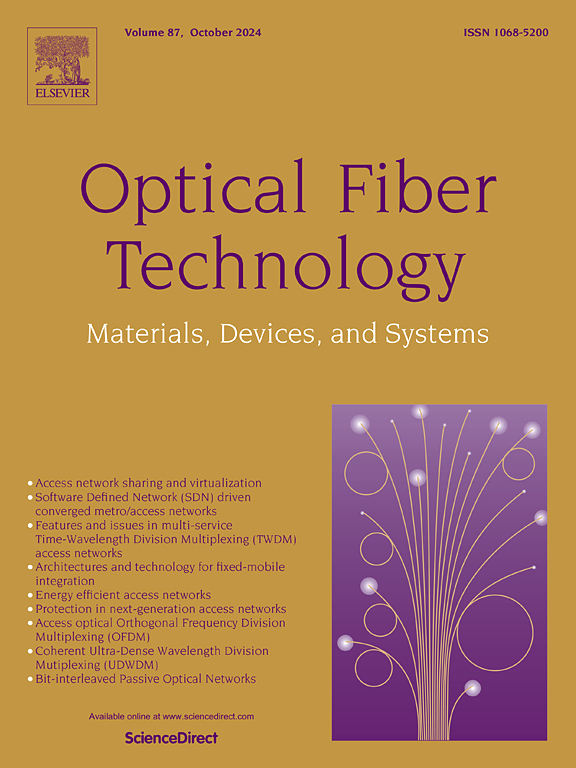用于血清白蛋白浓度传感的聚乙烯醇基银纳米复合材料中的碳纳米结构
IF 2.6
3区 计算机科学
Q2 ENGINEERING, ELECTRICAL & ELECTRONIC
引用次数: 0
摘要
通过溶液分散法在聚乙烯醇(PVA)基质中引入碳纳米结构作为增强元素已为人熟知。在此,我们研究了穿插碳纳米材料的质子传感器表面,以了解它们的耐用性和更好的传感能力。碳量子点(CQD)和多壁碳纳米管(MWCNT)是聚乙烯醇-银纳米复合材料中用于开发等离子传感表面的碳纳米结构。光纤无包层 U 型弯曲表面被封装在分散的聚乙烯醇-银纳米复合材料的碳纳米结构中。为了更好地进行生物共轭,该表面还被聚电解质聚(烯丙基胺)盐酸盐(PAH)进一步功能化。在现有的传感器文献中,对多次传感试验后传感层稳定性的评估几乎为零。在这项工作中,对传感器表面的等离子性能进行了多次传感试验后的评估。结果表明,通过在 PVA-银纳米复合材料中引入碳纳米材料,可以开发出具有更好传感性能的等离子体生物传感器。所开发的传感器头可用于感应牛血清白蛋白(BSA)的浓度变化。本文章由计算机程序翻译,如有差异,请以英文原文为准。
Carbon nanostructures in polyvinyl alcohol-based silver nanocomposites for serum albumin concentration sensing
Introducing carbon nanostructures in polyvinyl alcohol (PVA) matrix as strengthening elements by solution dispersion method is already known. Here, the plasmonic sensor surfaces interspersed with carbon nanomaterials are studied for their durable and better sensing capabilities. Carbon quantum dots (CQD) and Multiwall carbon nanotubes (MWCNT) are the carbon nanostructures used in the polyvinyl alcohol-silver nanocomposite to develop plasmonic sensing surfaces. Fiber optic unclad U-bent surfaces are encapsulated in the carbon nanostructure dispersed PVA-silver nanocomposite. The surface is further functionalized with the polyelectrolyte poly(allylamine) hydrochloride (PAH) for better bioconjugation. In the available sensor literature, the evaluation of the sensing layer stability after multiple sensing trials is almost nil. In this work, the sensor surface plasmonic performance after multiple sensing trials is evaluated. The results show that plasmonic biosensors with improved sensing performances can be developed by introducing carbon nanomaterials in PVA-silver nanocomposites. The developed sensor heads are used to sense Bovine Serum Albumin (BSA) concentration changes.
求助全文
通过发布文献求助,成功后即可免费获取论文全文。
去求助
来源期刊

Optical Fiber Technology
工程技术-电信学
CiteScore
4.80
自引率
11.10%
发文量
327
审稿时长
63 days
期刊介绍:
Innovations in optical fiber technology are revolutionizing world communications. Newly developed fiber amplifiers allow for direct transmission of high-speed signals over transcontinental distances without the need for electronic regeneration. Optical fibers find new applications in data processing. The impact of fiber materials, devices, and systems on communications in the coming decades will create an abundance of primary literature and the need for up-to-date reviews.
Optical Fiber Technology: Materials, Devices, and Systems is a new cutting-edge journal designed to fill a need in this rapidly evolving field for speedy publication of regular length papers. Both theoretical and experimental papers on fiber materials, devices, and system performance evaluation and measurements are eligible, with emphasis on practical applications.
 求助内容:
求助内容: 应助结果提醒方式:
应助结果提醒方式:


